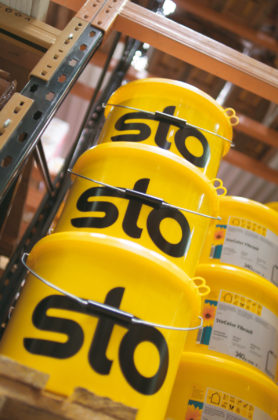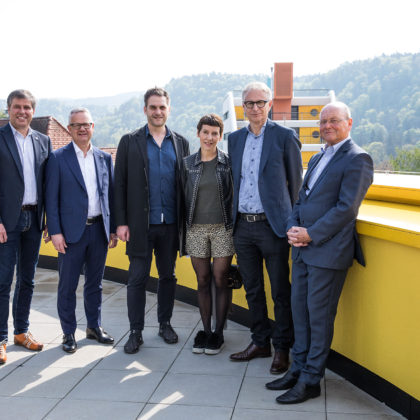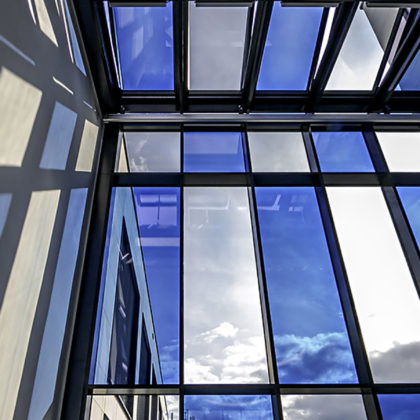Natural stone slabs on EWIS
Five different types of limestone, three coordinating formats, and direct application to the insulation system all make for a great level of variety on the facade. The natural stone slabs approved for the StoTherm Mineral and StoTherm Vario facade insulation systems make it possible to combine modern thermal protection with timeless beauty and durability.
Energy-efficient construction and renovation is now an absolute must. One of the most common measures used for facade insulation is in the form of external wall insulation systems (EWIS). In the early stages of development, render was the automatic choice as the finishing coat. However, there is now a large variety of possible surfaces: render, glass mosaic, ceramics, stoneware, brick slips, Verolith facade elements, or natural stone slabs. The latter option is becoming increasingly popular – thanks to both its high-quality appearance and its beneficial properties. First and foremost, we have to mention its long product life, which is a result of its mechanical, weather, and frost resistance. Its naturalness as well as its tactile and visual qualities also make it a convincing choice. The surfaces vary from smooth to rough: they can be polished, honed, sand-blasted, or even brushed. There is an extensive range of colour shades, grains, and spotted coatings. Stones such as shell limestone, with the textures of fossilised plants and animals, are also very popular. Since the stones are suitable for use both on the interior and exterior, surfaces blend seamlessly from the facade to the inside of the building without needing to change material.
The natural stone slabs are attached directly to the non-combustible StoTherm Mineral facade insulation system or to StoTherm Vario, which has limited combustibility, with the relevant technical approval (Z-33.46-422). The new natural stone panel tile range from Sto includes five different types of limestone with different surface finishes. The stone panel tiles, which are about ten millimetres thick, are available in three formats that can be combined in a modular configuration: 524 mm x 79 mm, 524 mm x 168 mm, and 524 mm x 257 mm. With these boards, which are not typically chamfered, it is possible to design varied natural stone facades using different bonds (stretcher, parquet, sequence, etc.) and joint patterns. The closed joint pattern with a width of about ten millimetres can be formed as a joint offset or cross joint. The permanently elastic field demarcation joints also deserve particular attention.
Natural stone on EWIS is an attractive choice as it can be combined with other surfaces (e.g. render), it is lightweight, and quick and easy to apply. However, the manufacturer must have specialist knowledge when cladding a facade with natural stone in an energy-efficient manner. The system has to include numerous well-engineered detail solutions for connections and finishes. The EWIS and RSC specialists at Sto have a particularly high level of professional knowledge in this area, because the Sto Group includes various quarries and two companies specialising in stone processing and finishing.
 |
Durable and cost-efficient: external wall insulation systems with natural stone slabs.
Image: Sto SE & Co. KGaA
|
||
 |
With natural stone facades, expertise is based on experience: Sto has this – and its own quarries.
Photo: Jens Hagen, Königsfeld
|
||
 |
Experience, knowledge, and the courage to try something new transform traditional stone facades into energy-saving facades
Photo: Jens Hagen, Königsfeld
|
||
 |
Light yellow or grey-blue, honed or sand-blasted, with offset joints, or as a cross joint: various types of stone, stone surfaces, and stone formats can be combined.
Photo: Sto SE & Co. KGaA
|
||
 |
Sto’s natural stone slabs made of limestone are extracted and processed at the company’s very own quarries in Germany. They are available in three formats – and can be combined with one another however you choose. The stones are applied directly to the facade insulation system.
Photo: Sto SE & Co. KGaA
|
||
Publication free of charge, specimen copy requested



